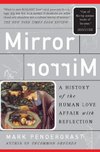
Saved by crystalhen
Mirror, Mirror: A History Of The Human Love Affair With Reflection

Saved by crystalhen
The Egyptians believed that each person had a double called a Ka, which represented a person’s essential genius, energy, and identity, as well as a Ba, the soul or consciousness, usually shown as a bird. The elaborate mummification of the body and other funeral practices were designed to preserve both Ka and Ba. The Ka, like its former body,
... See moreThe mirror appears throughout the human drama as a means of self-knowledge or self-delusion. We have used the reflective surface both to reveal and to hide reality, and mirrors have found their way into religion, folklore, literature, art, magic, and science.
An overarching theme in this book is that as human beings we use mirrors to reflect our own contradictory nature. On the one hand, we want to see things as they really are, to delve into the mysteries of life. On the other hand, we want the mysteries to remain mysteries. We yearn for definitive knowledge, yet we also revel in imagination, illusion,
... See moreThe mirror’s primary religious connection was to Ra—the most powerful deity, the omnipresent African sun—and the mirror was his symbol brought to earth. In Egyptian sculpture and painting there is always a round sun-mirror atop Ra’s falcon head. Even the mirror’s elliptical shape imitated the rising or setting sun, stretched sideways as it
... See moreLike most people, you’ve become so accustomed to this morning routine that you rarely think about it. Yet it’s almost unique in the animal kingdom, because the ability to recognize the creature in the mirror as you seems to be limited to the higher primates and, perhaps, dolphins and elephants. Other animals see only a rival or a friend.
Thus, the story of mirrors is also the story of light, that mysterious medium that acts simultaneously like a wave and a particle, imposes a speed limit on the universe, and in a sense is the universe, at least according to Albert Einstein. Yet no one really knows what light is. As if these mysteries were not enough, visible light is only one
... See morethe earliest artificial mirrors archaeologists have discovered, dating from around 6200 B.C.E. at Çatal Hüyük (near Konya, Turkey), were made of polished obsidian, a natural black glass created during volcanic eruptions.